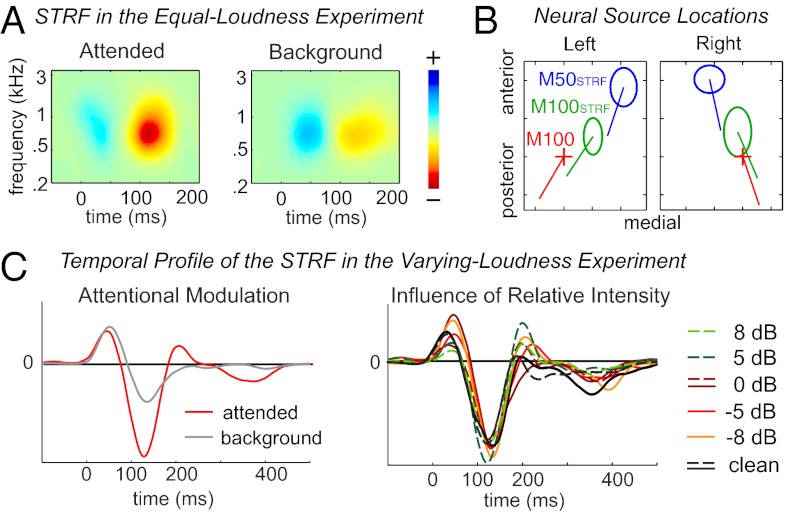Fig. 4.
Cortical encoding of the spectral-temporal features of different speech streams. (A) STRFs for the attended and background speech, at the neural source location of the M100STRF. Attention strongly enhances the response with latency near 100 ms. (B) Neural source locations for the M50STRF and M100STRF in each hemisphere, as estimated by dipole fitting. The location of the neural source of the M50STRF is anterior and medial to that of the M100STRF and M100. The source location for each subject is aligned based on the source of the M100 response to tone pips, shown by the cross. The span of each ellipse is 2 SEM across subjects. The line from each dipole location illustrates the grand averaged orientation of each dipole. Each tick represents 5 mm. (C) Temporal profile of the STRF in the Varying-Loudness experiment for the attended speech. The M100STRF (averaged over TMR) is strongly modulated by attention, whereas the M50STRF is not (Left). Neither response peak is affected by the intensity change of the two speakers (Right).

